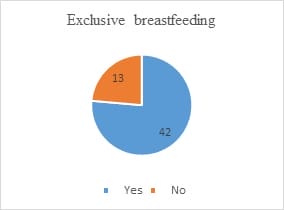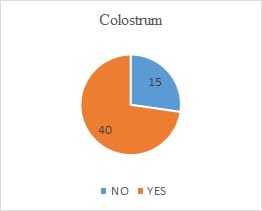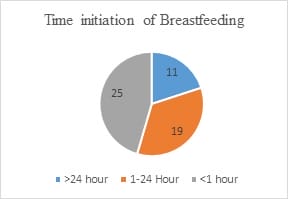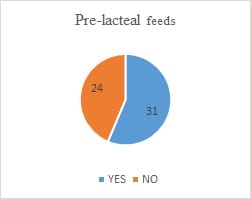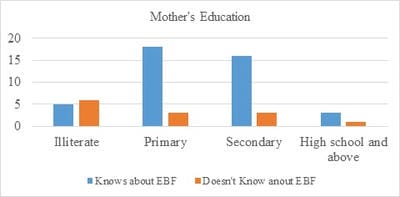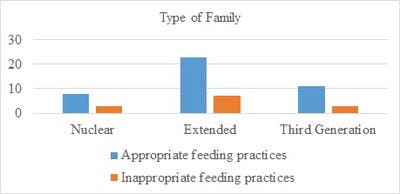Study on infant feeding practice among children up to 6 months in an urban slum of Bhopal
Sarkar R.1, Kawanpure H.2*
DOI: https://doi.org/10.17511/ijphr.2021.i03.02
1 Ria Sarkar, Post Graduate Resident, Department of Community Medicine, People’s College of Medical Sciences & Research Centre, Bhopal, Madhya Pradesh, India.
2* Harshal Kawanpure, Associate Professor, Department of Community Medicine, People’s College of Medical Sciences & Research Centre, Bhopal, Madhya Pradesh, India.
Introduction: High morbidity and mortality among the under 5 children are highly prevalent in India. Appropriate child feeding practices in the initial six months of age act as a preventive intervention against childhood morbidity and mortality. Methods: A questionnaire-based cross-sectional study was conducted in an urban slum to study various feeding practices prevalent among children up to 6 months of age. Also associated socio-demographic factors were studied. SPSS software version 25 was used to analyze the results. Results: The study included 55 children up to 6 months of age. Out of these 76.4% were exclusively breastfed. Among 45.5%, breastfeeding was within 1st hour of the birth. 56.4% have received pre-lacteal feeds, while 72.72% received colostrum. The educational status of the mother and place of delivery were major determinants of appropriate infant feeding practices. Conclusion: Most mothers are practising exclusive breastfeeding. Colostrum was fed to most of the children. Animal milk was given in cases where initiation of breastfeeding was delayed.
Keywords: Appropriate child feeding practices, Colostrum feeding, Pre-lacteal feed, Exclusive breastfeeding, Mother’s education
| Corresponding Author | How to Cite this Article | To Browse |
|---|---|---|
| , Associate Professor, Department of Community Medicine, People’s College of Medical Sciences & Research Centre, Bhopal, Madhya Pradesh, India. Email: |
Sarkar R, Kawanpure H. Study on infant feeding practice among children up to 6 months in an urban slum of Bhopal. Public Health Rev Int J Public Health Res. 2021;8(3):39-44. Available From https://publichealth.medresearch.in/index.php/ijphr/article/view/162 |


 ©
© 